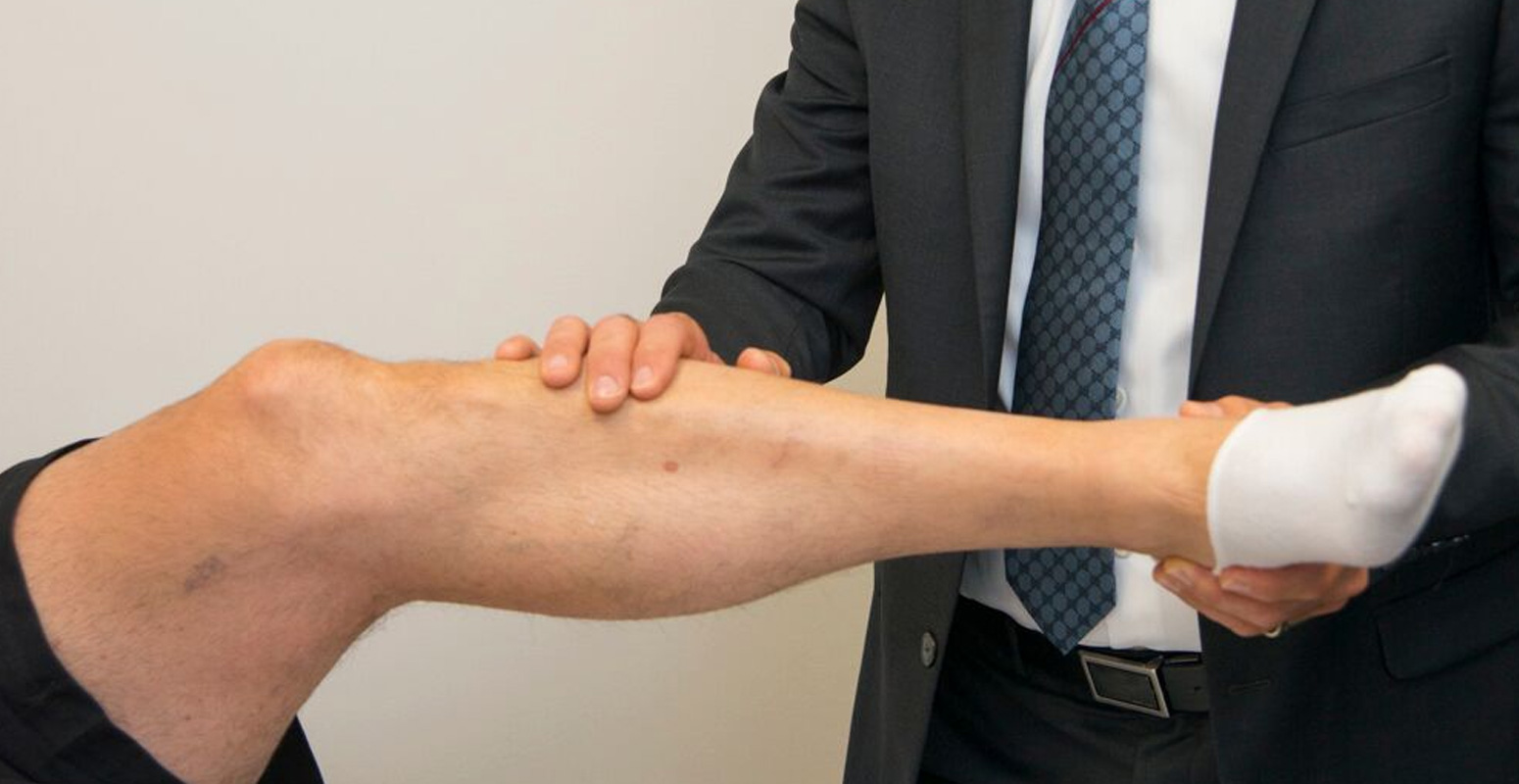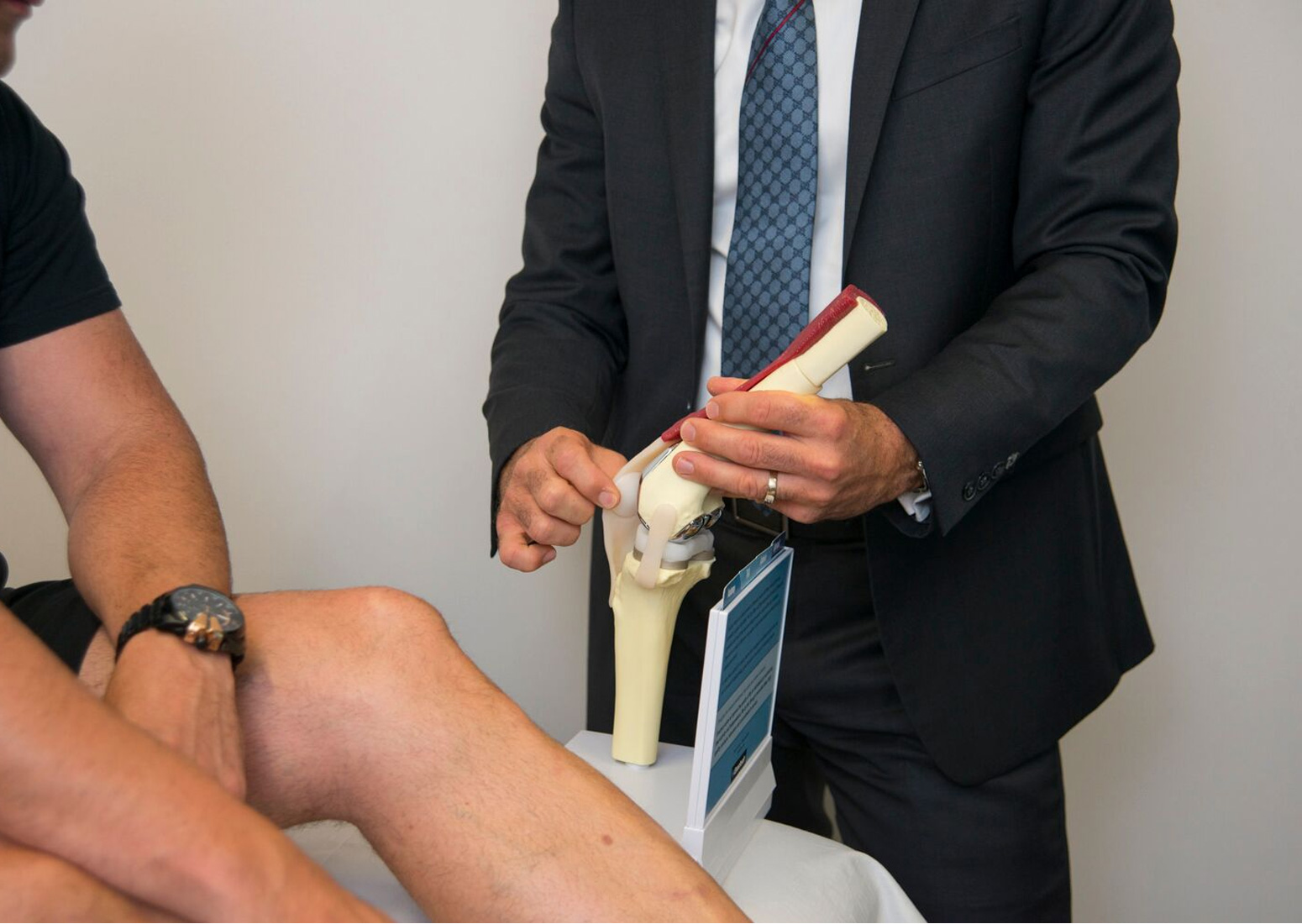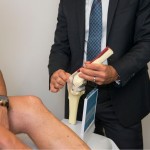Conditions / Sport Injuries
ACL Tears

The anterior cruciate ligament (ACL) is a tough, fibrous band of tissue that connects and stabilises the femur (thigh bone) and Tibia (Shin bone).
It is an important ligament for normal knee function and stability. It is an essential ligament in controlling the rotation forces developed during side stepping, pivoting and landing from a jump. Hence these injuries are commonly encountered during pivoting sports such as Rugby League, Soccer, Netball and Skiing. The aim of treatment is therefore to stabilise the knee and prevent recurrent instability so that the patient can return to normal functional activities.
Non Operative Management
Not all patients require a reconstruction of their anterior cruciate ligament (ACL). These patients are generally associated with work and sporting activities that do not require pivoting or sudden change in direction. These include things that involve in line movements such as cycling and swimming. The aim of conservative treatment is to reduce the swelling and restore range of motion. In addition to this the patient needs to increase the strength of the quadriceps and hamstring muscles in order to compensate for the instability associated with the cruciate ligament deficiency. This is generally performed under the guidance of a physiotherapist.
Operative Management
A torn ACL cannot heal by itself and in most cases needs to be repaired (paediatric) or reconstructed (adult). Reconstruction of the ACL is protective of future meniscus damage and potentially then avoid subsequent degenerative changes within the knee. The decision whether to have an ACL reconstruction should be made after discussion with your surgeon.
My reconstruction technique which has been supported over many years in the literature involves harvesting your hamstring tendons from the same knee and utilising these as graft for a new ligament. Tunnels are then drilled in to the tibia and femur and the graft is secured at both ends. The post-operative period entails a rigorous rehabilitation programme which must be adhered to diligently as it is directly correlated with a successful outcome. The time needed for the graft to incorporate in the bone may take 6 months or more. It may be 6 to 12 months before returning to sport. At the time of surgery often there is other damage to the knee which is attended to at that time such as a meniscal tear.
As with any operation there are general risks associated with surgery and specific risks for ACL surgery. These are generally in the vicinity of less than 5% and should be discussed with your surgeon at length prior to proceeding. Using donated tissue as a graft is also an option in certain circumstances.
ACL surgery is a highly successful procedure at restoring stability and allowing return to elite level sport.
Due to Dr Shidiak’s position as team doctor for the Parramatta Eels and Wentworthville Magpies football club, he is highly experienced in the treatment of ACL injuries in elite athletes and is able to use his expertise to provide the best possible treatment and outcomes when dealing with people with these injuries at all levels of age and fitness.



